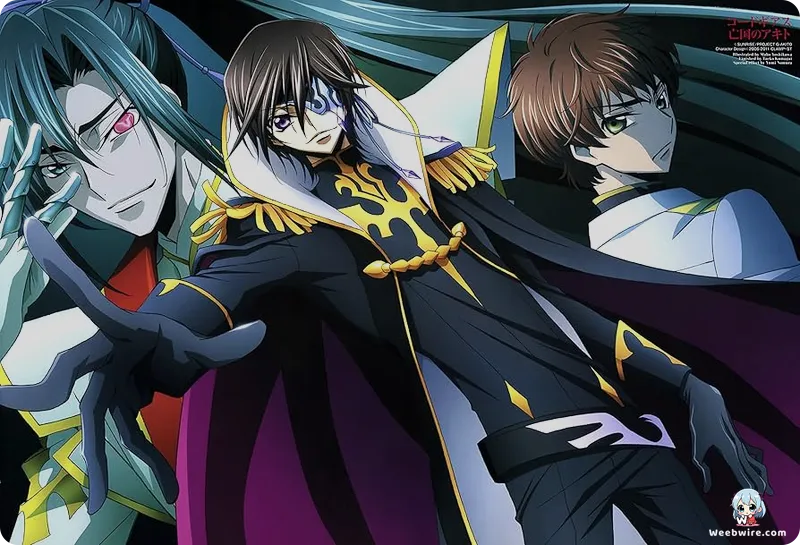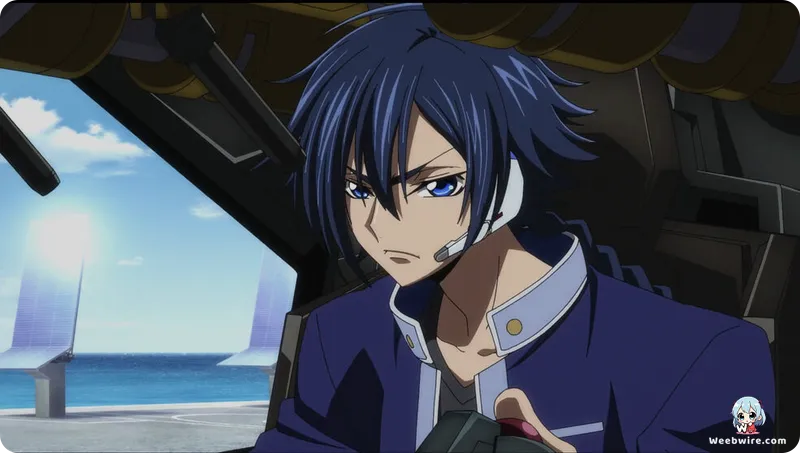Unmasking 'Akito the Exiled': The Untold Code Geass Saga That Redefined the Universe

While the name 'Code Geass' often conjures images of Lelouch Lamperouge, the Black Knights, and the iconic Geass power, a compelling, yet often overlooked, chapter exists within its expansive universe: Code Geass: Akito the Exiled. This five-part original video animation (OVA) series, which premiered in 2012, offers a fascinating and distinct narrative set on the European front of the Britannian-EU war, asserting its own unique identity within the franchise.
A pivotal distinction lies in its directorial change. Unlike the main series helmed by Gorō Taniguchi, Akito the Exiled was directed by Kazuki Akane, known for works like The Vision of Escaflowne. Akane’s distinct style brings a fresh aesthetic and a darker, more introspective tone, delving into themes of child soldiers, trauma, and identity. This shift resulted in a series that, while retaining the core essence of Code Geass, felt refreshingly new and profound.
The series further distinguishes itself with its geographical and political focus. Instead of the familiar territories, Akito the Exiled plunges viewers into the tumultuous European Union (EU) and its desperate struggle against the Holy Britannian Empire. This expansion showcases the war from a different perspective, introducing new factions and strategies. The EU serves as the backdrop for the W-0 unit, a special forces squad primarily composed of Japanese exiles, or 'Elevens,' fighting for freedom, highlighting different cultural dynamics and the harsh realities of global conflict.
Knightmare Frames in Akito the Exiled also boast a unique design philosophy. Absent are the Lancelot and Guren; instead, the series introduces formidable machines like the Wyvern units. These Knightmares, with their sleeker profiles and specialized weaponry, reflect the EU’s tactical reliance on speed and agility. Overseen by original mechanical designer Akira Yasuda, these designs maintain the Code Geass aesthetic while innovating with new functionalities. The combat sequences are particularly noteworthy, featuring incredibly fluid and dynamic animation from Studio Sunrise, delivering some of the most thrilling action in the franchise.

The portrayal of Geass within Akito the Exiled is equally compelling. Unlike Lelouch's absolute command, protagonist Akito Hyuga's Geass is a terrifying, uncontrollable berserker state. Triggered by Shin Hyuga Shaing, it compels Akito to kill relentlessly, transforming him into an almost inhuman force. This version highlights the darker, more destructive aspects of the power, turning it into a curse rather than an advantage. It forces Akito and his comrades, especially Leila Malcal, to grapple with the profound ethical and psychological implications of such an ability, adding a layer of personal tragedy and struggle.
Fans will also appreciate the subtle yet significant connections to the main Code Geass timeline. Without spoilers, familiar faces make appearances, offering tantalizing glimpses into their activities, such as C.C. and a masked individual. These cameos are carefully woven, affirming Akito the Exiled as an integral part of the Code Geass lore. Furthermore, the character development is a standout, with Akito Hyuga and Leila Malcal forming the emotional core. Their dynamic, built on trust and a shared desire for peace, provides a powerful counterpoint to war's brutality. Leila's compassionate leadership, prioritizing soldiers' well-being, contrasts sharply with typical military pragmatism. This character-driven storytelling, combined with unique world-building and breathtaking action, makes Code Geass: Akito the Exiled a truly engaging and often overlooked gem within the Code Geass legacy, richly rewarding those who delve deeper into its narrative.
Credits
Code Geass: Akito the Exiled
Author
Sunrise, Ichirō Ōkouchi, Gorō Taniguchi
Cover Art
Takahiro Kimura
Studio
Sunrise
Publisher
Bandai Visual
Producers





